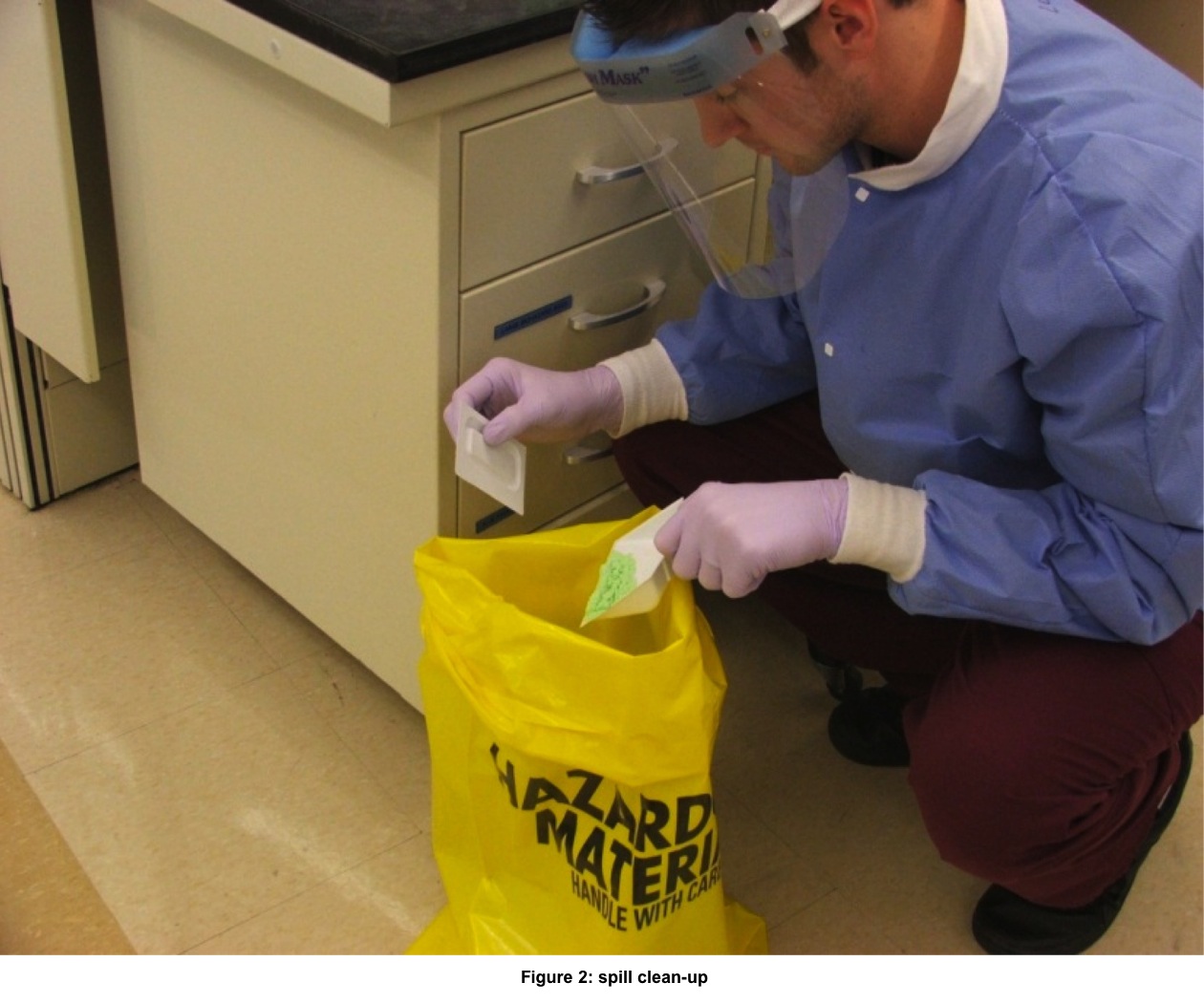Cite this page: Scungio D. Chemical hygiene . PathologyOutlines.com website. https://www.pathologyoutlines.com/topic/managementlabchemhygiene.html. Accessed April 18th, 2024.
Definition / general
- The work performed in clinical and anatomical pathology laboratories is made possible through the use of several different types of hazardous chemicals
- The hazards posed by these chemicals vary, and proper chemical management is imperative to ensure the safety of laboratory personnel
Regulation
-
OSHA and the EPA act as chemical management regulatory agencies to oversee the proper shipment, storage and handling of hazardous chemicals in the laboratory
- Occupational Safety and Health Administration (OSHA)
- 29 CFR 1910.1200 - Hazard Communication - 1987
- 29 CFR 1910.1450 - Chemical Hygiene Standard - 1990
- Supersedes Hazard Communication of 1987 - for laboratories only
- The Hazard Communication Standard was revised in 2012 in order to adopt the Globally Harmonized System for the classification and labeling of chemicals (GHS), a worldwide effort to standardize chemical labels and Safety Data Sheets (SDS)
- Environmental Protection Agency (EPA)
- Regulations focus on chemical waste handling / disposal
- Laboratories that generate waste must follow specific procedures (US Environmental Protection Agency-Hazardous Waste Generators)
- College of American Pathologists (CAP)
- Laboratory general inspection checklist
- Anatomic pathology inspection checklist
Laboratory
-
Laboratory requirements:
- Written chemical hygiene plan
- Updated annually
- Standard operating procedures
- Environmental monitoring
- Perform on chemicals such as xylene and formaldehyde
- Employee education
- Train all staff on chemical hazards, proper chemical management
- Engineering controls
- Remove the hazard from the workplace
- Example: chemical fume hoods with proper ventilation
- Work practice controls
- Provides a procedure to protect the employee from the hazard
- Example: when pouring chemicals, work under a hood and use goggles, a cover gown and gloves
- Personal protective equipment
- Provide lab coats, chemical-resistant gloves, face protection
- Chemical storage
- Do NOT store alphabetically by name
- Use a chemical incompatibility chart to prevent storage errors
- Chemical inventory
- Updated annually
- Electronic format is preferred
- Exempt chemicals: those in kit form or that contain less than 1% of a hazardous chemical
- Note carcinogens
- Note acutely and reproductively toxic chemicals
- Safety Data Sheets (SDS) for each hazardous chemical should be available
- Proper labeling of chemicals
- All primary containers need GHS-complaint labeling as of 6/1/16 (Occupational Safety & Health Administration)
- Transfer containers: may use NFPA / HMIS labeling
- Chemical waste
- Check local regulations and sewage treatment plant for capacity before disposing of anything down the drain
- Consider other waste handling options:
- Removal by outside firm
- Neutralizing
- Recycling
- Medical exam for overexposure
- Follow up for any high vapor badge monitor readings or accidental chemical exposures
- Documentation
- Safety Data Sheets (SDS):
- Needed for each hazardous chemical in your inventory
- Access quickly for exposures and spills
- GHS format has 16 standard sections
- Keep for 30 years if chemical has been involved in an exposure incident
Labels
-
Chemical labeling:
- Primary chemical label must contain:
- Product name
- Signal word (either warning or danger)
- Any needed hazard statements
- Precautionary statements
- Pictograms
- Manufacturer name, address and telephone number
- See figure 1
- Secondary chemical label must contain:
- Option 1:
- Name of the chemical
- Concentration
- Route of entry
- Health hazard
- Physical hazard
- Target organs affected
- Lot number and expiration date
- Option 2:
- Name of the chemical
- NFPA or HMIS label that is filled out to indicate the potential hazards
- Option 3:
- Name of the chemical
- GHS signal word
- Appropriate pictograms
- Option 1:
Contributed by OSHA
Administration
-
Administrative requirements:
- Name a Chemical Hygiene Officer (CHO) for the laboratory
- Responsible for chemical management administrative duties
- CHO should be in job description
- Perform task assessments for processed involving chemicals
- Assemble a safety committee
- Perform safety audits
- Discuss safety issues / incidents
- Chemical spill handling:
- Provide spill response training for all staff that handles chemicals
- Confine or contain the spill
- Small quantities of inorganic acids or bases - use a neutralizing agent
- Small quantities of other materials - absorb with towels or spill pillows
- Large quantities of inorganic acids or basis - flush with large amounts of water
- Mop or sweep up the spill (see figure 2)
- Dispose of waste in proper receptacles
- If spilled chemical is volatile, let it evaporate
- Annual review of chemical management:
- Analyze effectiveness of your chemical hygiene plan
- Review chemical inventory
- Review training
- Review chemical incidents
- Use substitutes for hazardous chemicals where possible
- Reduce hazardous waste volumes
- Remove outdated chemicals
- Analyze effectiveness of your chemical hygiene plan
Contributed by Dan Scungio, MT (ASCP), SLS, CQA (ASQ)




